



On 7th July 1985 Handley Page Herald G-APWJ was flown into Duxford by Air UK for donation to the Duxford Aviation Society to be preserved as part of their iconic British Airliner Collection. PWJ was the last Air UK Herald to operate scheduled passenger services with the airline. Thirty seven years later she left Duxford for a new home in Scotland with the Morayvia Air Museum at Kinloss. This is her Duxford story.

Her last scheduled passenger flight was to be the culmination of 22 years of airline service, the last five with Air UK. The flight was scheduled for Saturday 29 June 1985 with a leg from Jersey to Southampton and then returning empty to Norwich the following day allowing the crew to return home to start their Fokker F-27 course on Monday. On arriving back at Norwich the crew were asked to fire the trusty PWJ up again and take her to Leeds to operate a leg to Belfast as the scheduled F-27 was grounded with technical troubles. Happy to get a little more Herald time in before she was retired the crew took off and delivered the stranded passengers to Belfast. On the return leg to Leeds the weather had closed in so they had to divert to Manchester making the Belfast-Manchester leg the last scheduled Air UK service operated by a Herald. It was Monday morning before PWJ eventually returned to Norwich and retirement, a few weeks later she would fly to Duxford
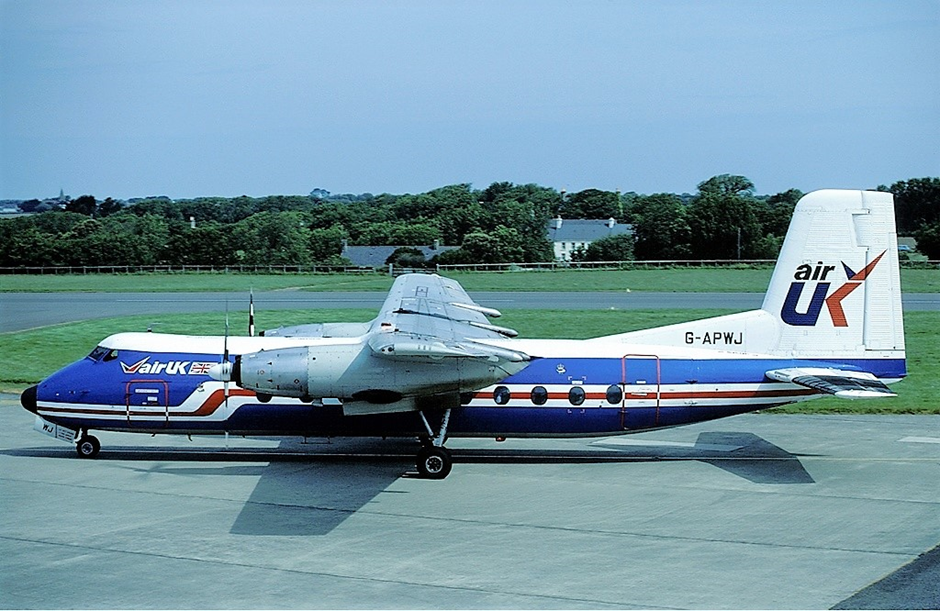
After arrival at Duxford she was proudly put on display as part of the outside flight line and was open whenever possible to the public. As the years went by despite regular washing and occasional polishing being parked outside for many years meant the weather had begun to badly affect the paintwork, also there were signs corrosion was beginning to make itself felt in various places. Therefore the decision was taken to undertake a full restoration both outside and within the cabin. Work was scheduled for late 2008 and would require major dismantling of the airframe. Nobody expected the restoration to take as long as 10 years !
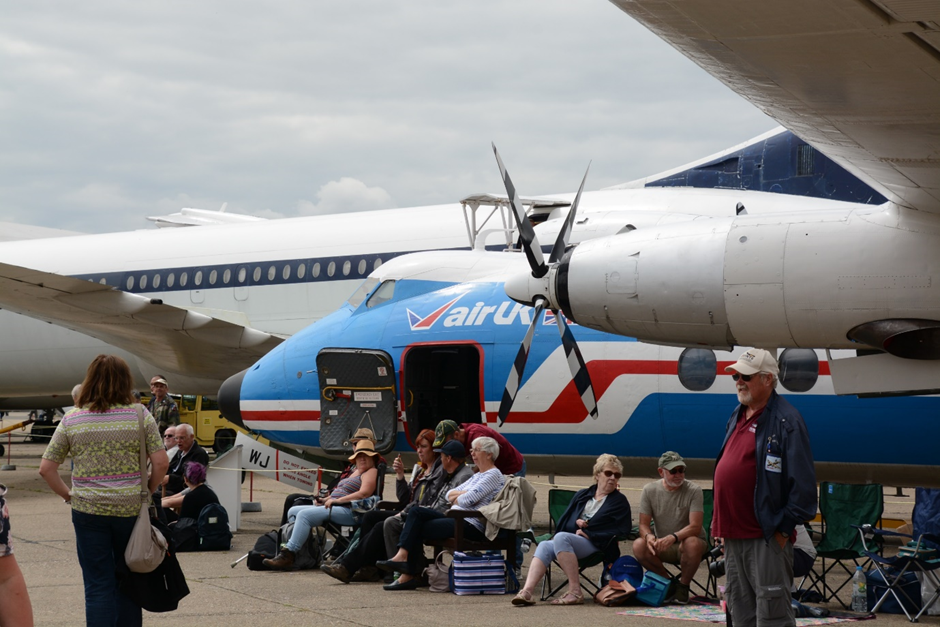
Work began removing the engines, tailplane, fin and flaps. These would be placed in our workshop/yard so that work could begin on these whenever the weather prevented outside work. For large units like these we had to hire in a crane for the lifting. Our colleagues at the Military Vehicle Wing assisted with their large forklift and breakdown lorry whenever possible to avoid any additional costs.
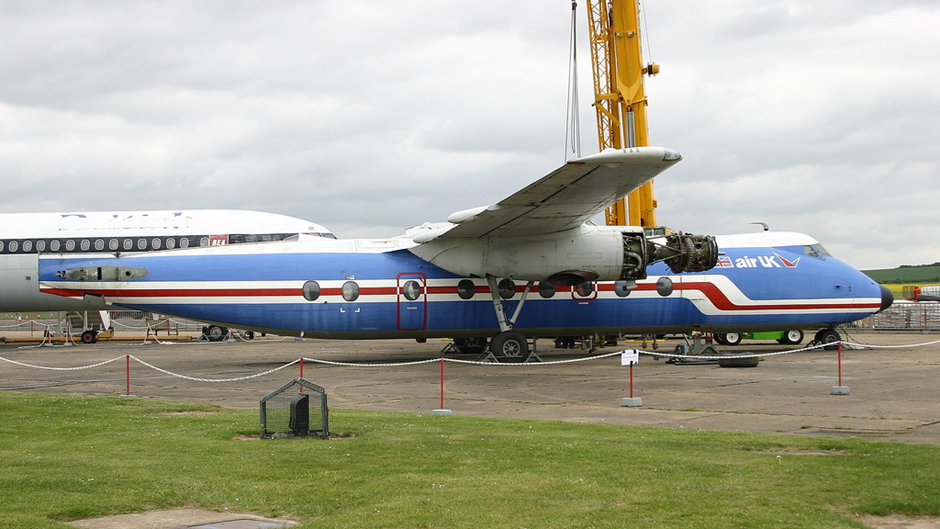
With all the large items removed work could start on the stripping of the external paintwork as it had been decided to carry out a back to bare metal repaint as this would enable any areas of corrosion to be dealt with more easily. As it happened most of the anti corrosion work was required under the cabin floor. The rest of the airframe was in remarkably good condition considering she first flew in 1963, 46 years ago. Paint stripping didn’t start for several more years and when it did most people involved wished it hadn’t started at all! Stripping the paintwork was a nightmare as the efficient paint strippers of old had long been banned on H&S or environmental grounds and the modern stuff just didn’t cut the mustard. It had to be painted on and left for at least 24 hours before there was any useful effect.
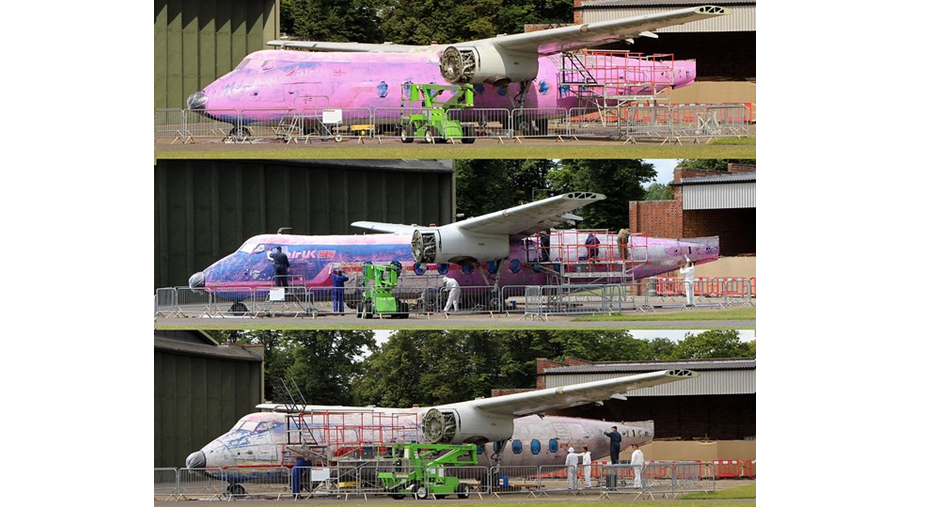
After painting on the stripper and waiting for it to take effect the work of scraping and brushing around the thousands of dome topped rivets was an arduous task to say the least. The volunteers at DAS were at the time also being helped by French students from the ESTACA engineering college near Paris who were with us during the summer on work experience. But even with lots of man (and women) hours being poured into the job it took a very long while to get back to the bare metal. During the paintwork exercise stripper found its way onto some of the windows and it was decided to cut our losses and make a complete set of new Perspex ones for later fitment when the repainting had been done along the cheat line.
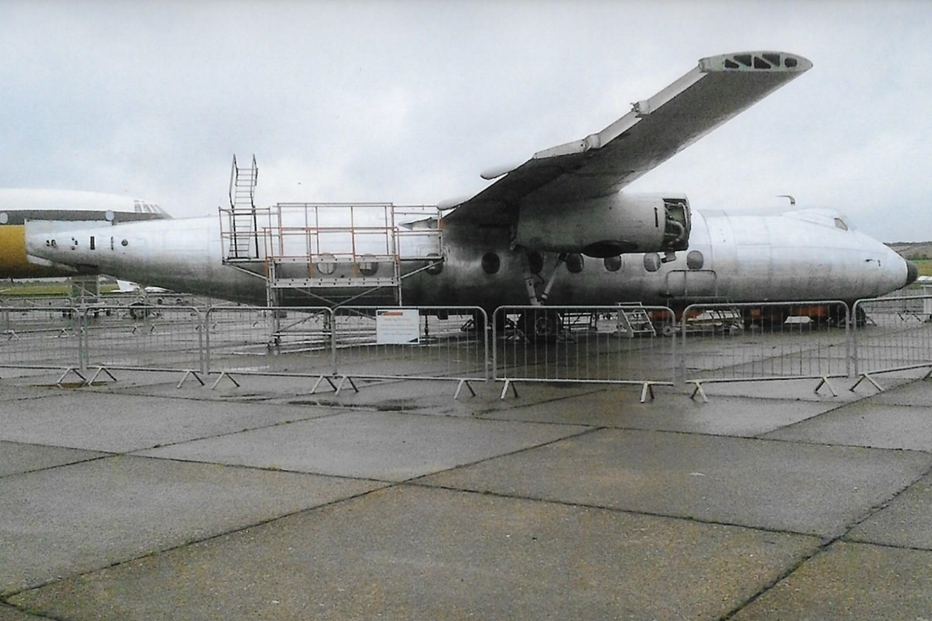
With no long-term hanger space available at Duxford repainting had to begin outside with the application of the primer, once again many volunteers were called upon to get the paint on as soon as possible to protect the unblemished bare skin. This work was the priority so very little had been going on inside other than the removal of all the seats and the lifting of the cabin floor to attend to the small amount of corrosion that had been found.
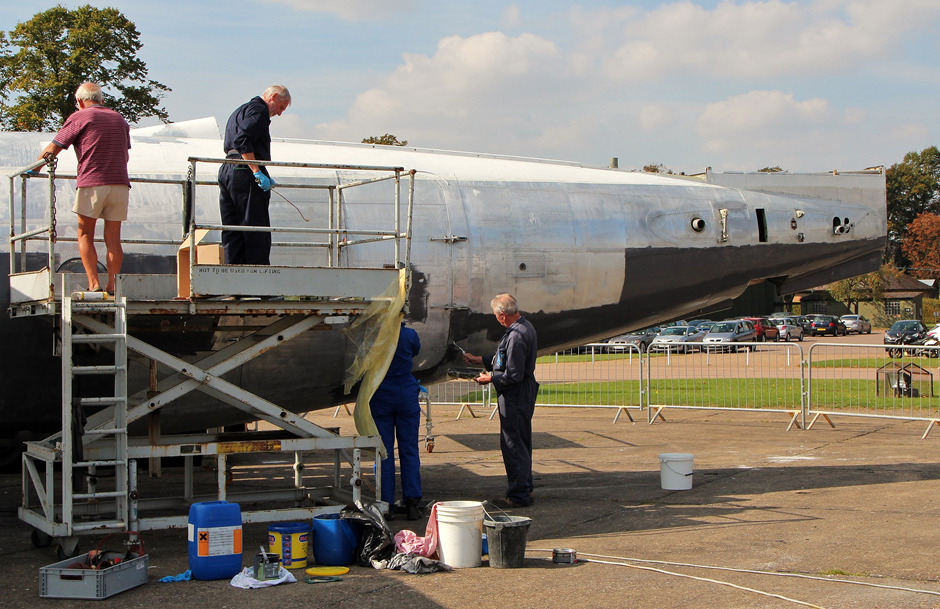
As the paint slowly began to be reapplied, the components that had been removed to the workshops years earlier were also beginning to come to the end of their restoration. Parts like the engines, propellers fin and tailplane had all been stripped, cleaned , repaired as required and now repainted awaiting their turn to be refitted to the mother ship. With the lower fuselage repaired and the cabin floor refitted it was now possible for work to commence inside removing all the side wall and head lining trim as the whole lot was going to be remade by our upholsterer Ray.
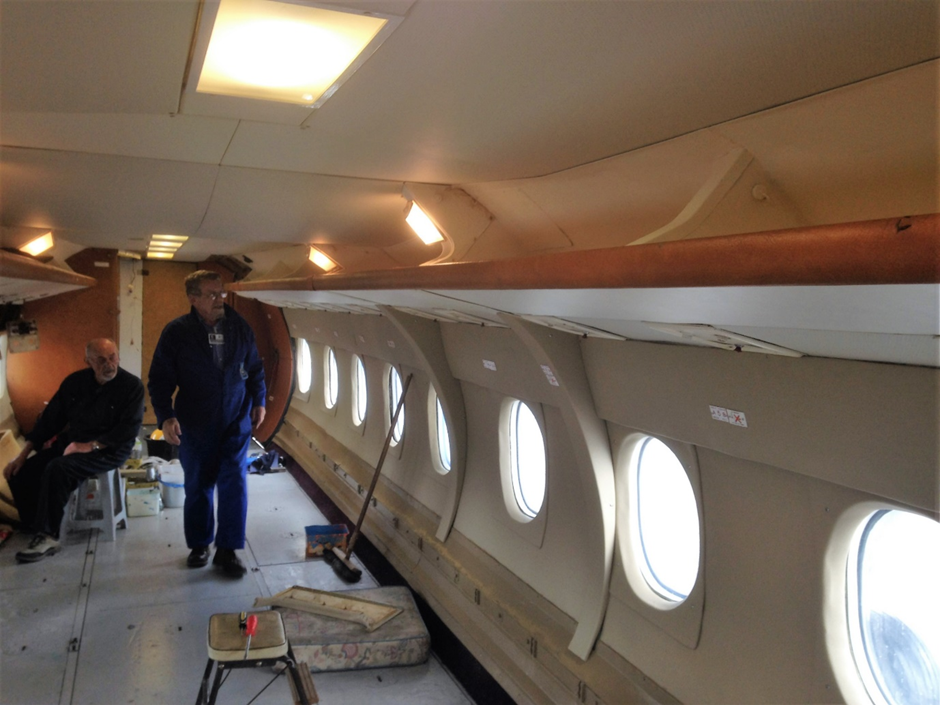
With the bulk of the fuselage repaint completed and new windows fitted, the fin and tailplane could be re fitted. Whilst awaiting the fitment of these, the two Rolls Royce Dart engines were rehung on the wings. She was coming back together. It was hoped to be able to get a short stay in the conservation hall of the Airspace hanger to enable safe access to paint the top of the wing.
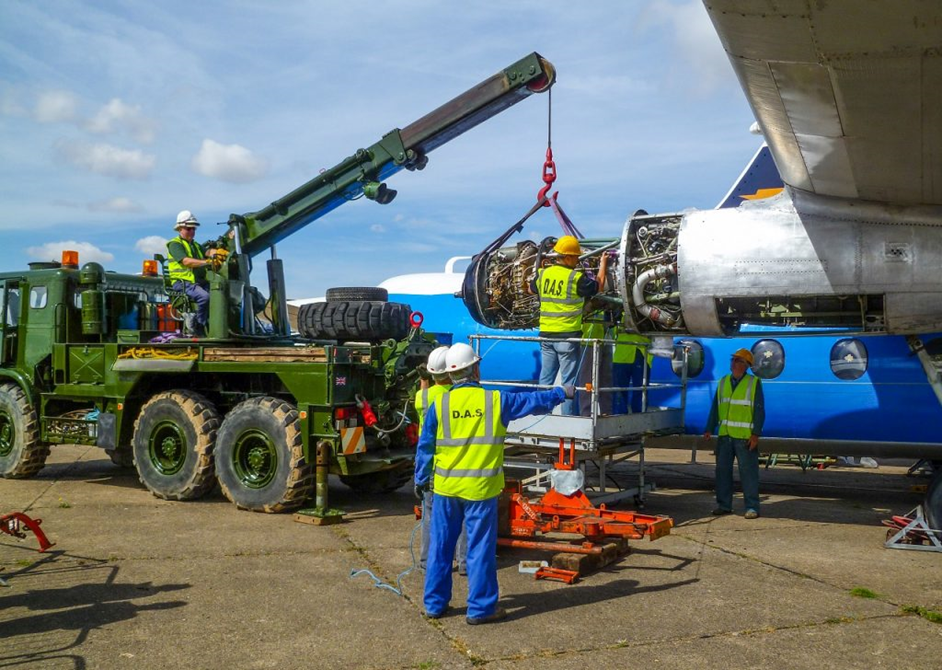
It was now possible to start replacing all the smaller items such as fairings and engine cowlings at long last freeing up space in the workshops where they had spent time being worked on. Some of our French students spent time on our stencil making machine making up all the small decals that would be required later in the restoration. In the cabin the original carpet was in good condition so a day spent with an industrial cleaning machine brought it back to like new. The seats had also been cleaned and with the side and roof panels complete these could begin to be re fitted .
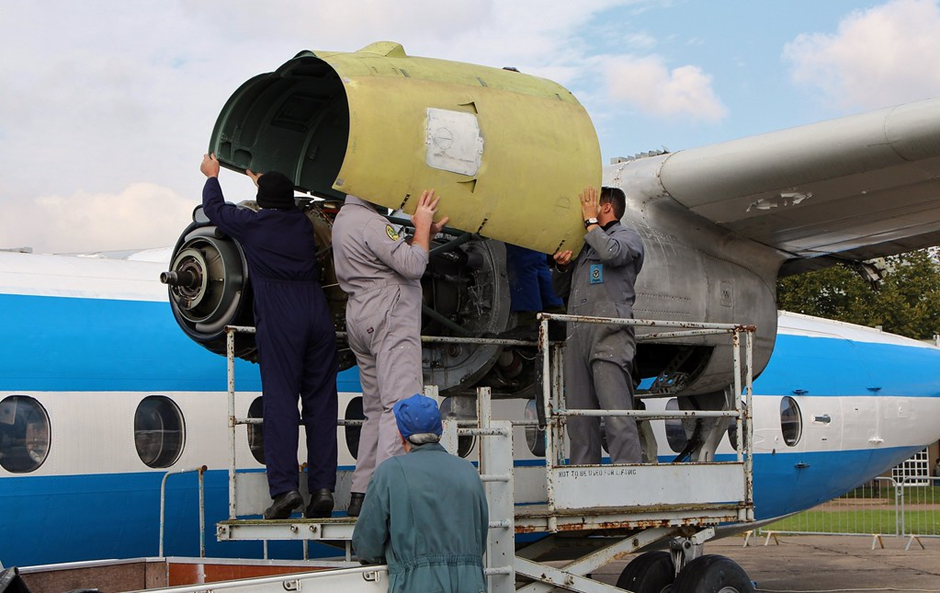
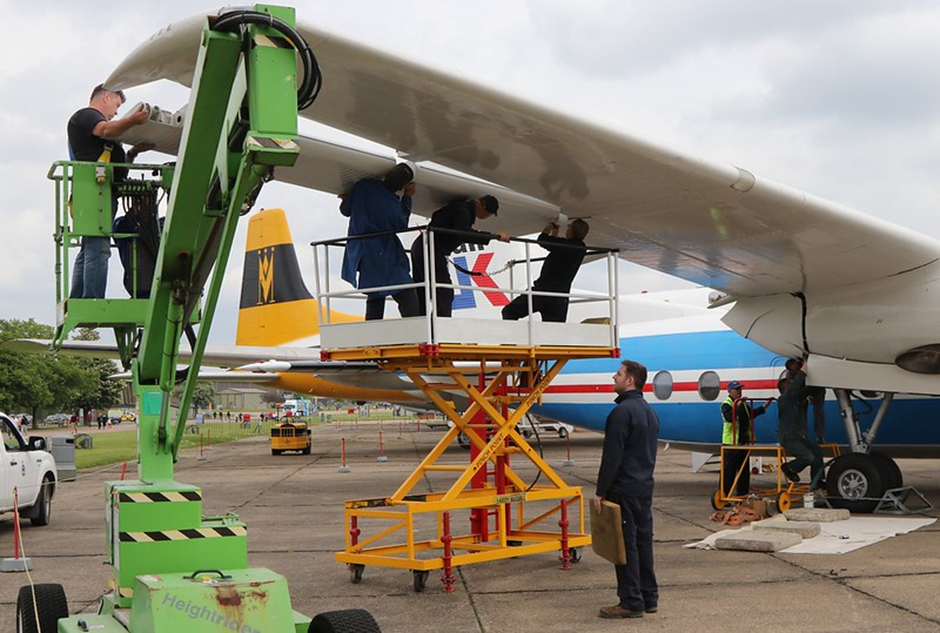
It wouldn’t be until 2018 that the IWM offered us a slot in the conservation hall for the repainting of the top of the wings and the refitting of the flaps. A lot of work was carried out in readiness for this and on the allotted day she was towed down the apron to the hanger for the last major hurdle of the restoration. When she finally rolled out of the hangar there were just a few small jobs like refitting the nose landing gear doors to finish off once she was back at her parking spot. Everybody in DAS, as we had all been involved at some time or another, could at last pat themselves on the back for a job well done over the past 10 years.
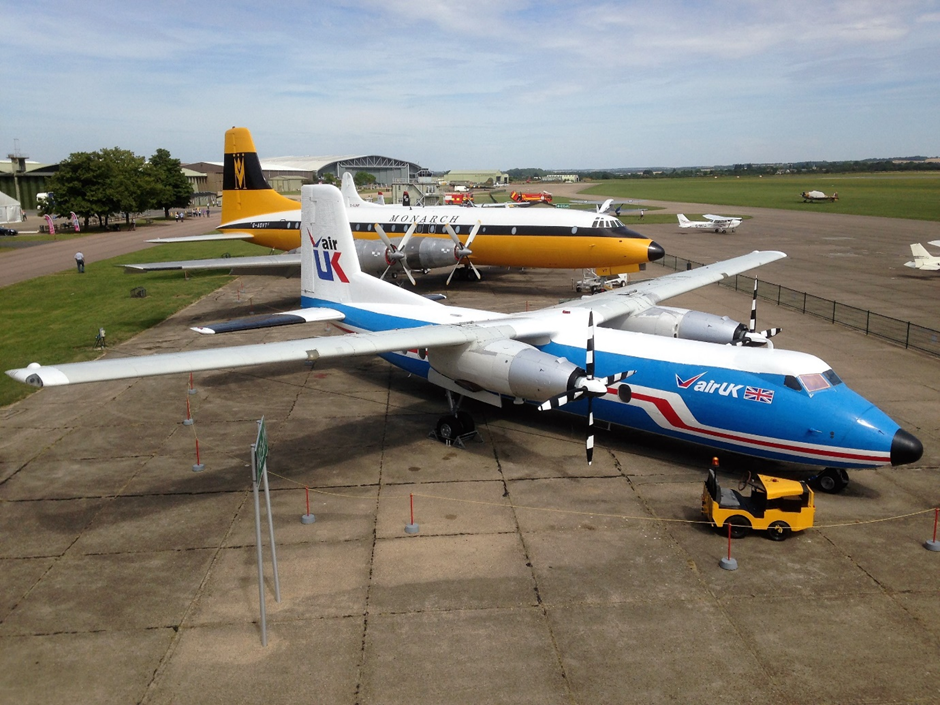
Once again she settled down into her life of retirement with visitors walking through whenever she was open. However concerns began to be raised about allowing the public to exit through her small service door at the front, so guests had to come and go through the rear door which meant some serious crowd control to stop people being trapped in the cabin. 2020 Covid arrived and the Herald along with all the other airliners was closed to visitors. As restrictions ebbed and flowed it became possible to open others using a one way visitor flow system but with just one usable door it was not possible to re open the Herald.
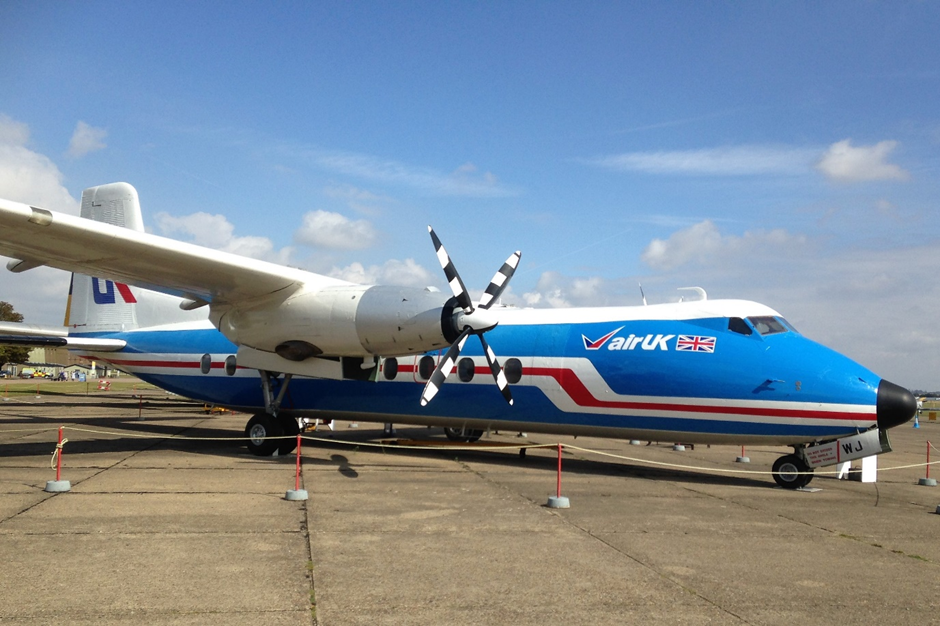
The following year in late 2021 DAS was offered the opportunity to accept a BAe146 from the RAF 32(Royal) squadron. This was an ex-Queen’s Flight aircraft and was still used for flying members of the Royal family, the government and other VIPs. With the BAe146 becoming increasingly scarce in Europe and the fact it was the last British built airliner the decision was made to accept the offer. It was of course known that the IWM had a long-standing policy not to allow the British Airliner Collection to expand because of space and financial liability concerns. They agreed to the 146 being added to the collection on the strict understanding that one of the existing aircraft would leave Duxford either to another museum or to a scrap yard. Bearing this in mind every effort was made by DAS to get the IWM to change their mind but it was not to be, so a decision had to be made as to which aircraft would leave the collection. After much soul-searching the Herald was chosen because it was no longer possible in these Covid-hit times to open her to visitors. There is also another example just up the road at Norwich. The third example open to the public was also not that far away at Reading. A massive effort was made to find her a safe future. Morayvia a museum in Scotland offered her a home and as this would put her in touch with a new audience plus Heralds were used in the Scottish Highlands and Islands an agreement was made and plans commenced to get her up to Scotland.
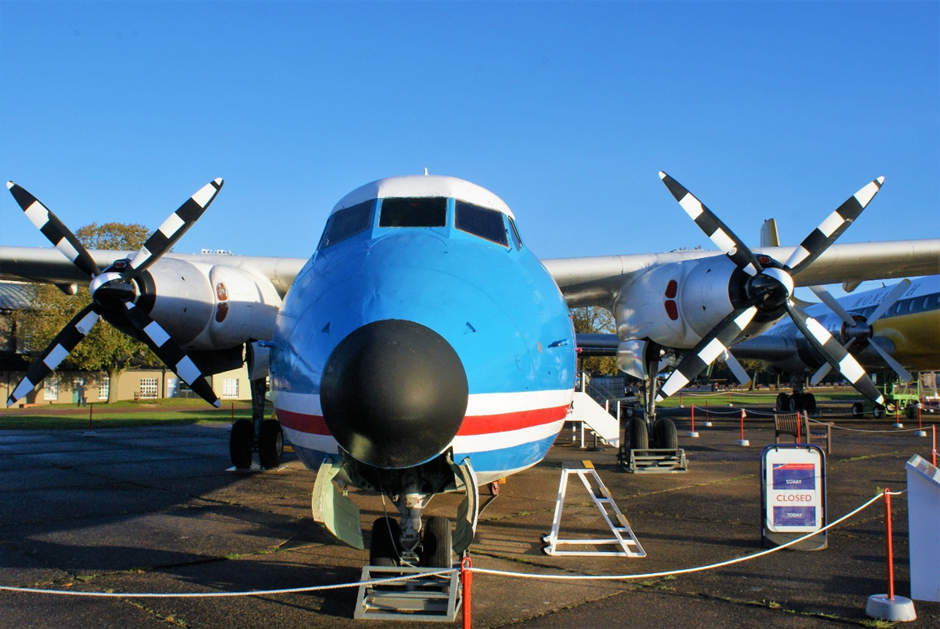
It was decided that DAS would remove the engines and propellors but the bulk of the dismantling would be undertaken by contractors. Work commenced by jacking her up so the axle stands could be removed, tyres pumped up and the aircraft readied for a tow to the end of the apron where the dismantling could safely take place. During this preparatory work an undercarriage leg stay was found to be badly cracked. She couldn’t be towed anywhere in this condition, fortunately a spare was located in one of our containers and the damaged unit was quickly replaced in time for her to be towed on the allotted day down to the jet pan by the Airspace hanger. By this time DAS volunteers had already removed the propellers and engine cowlings. The engines would come out once she was on her final resting spot.
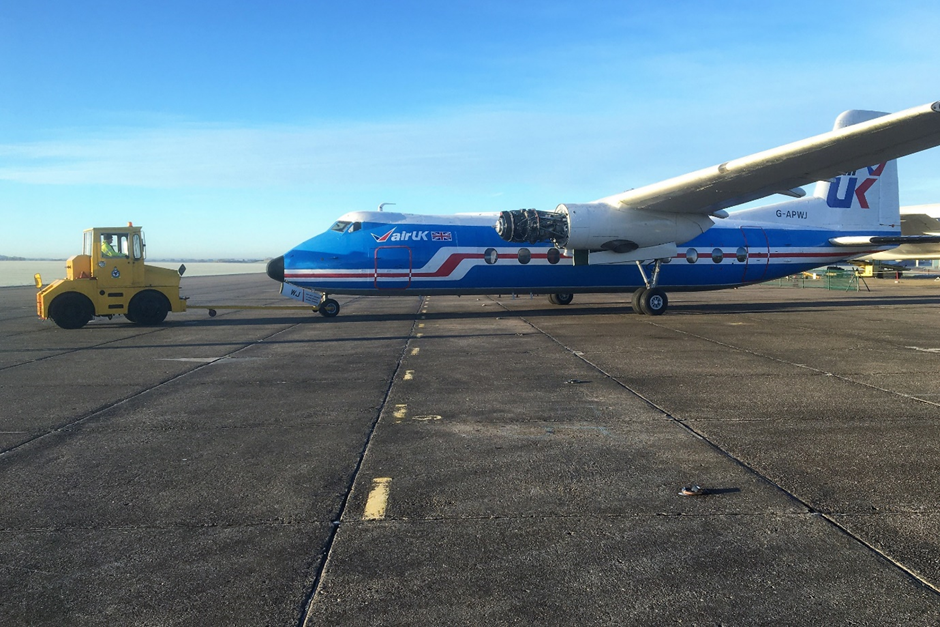
The next day the contractors arrived in their mobile home which would be their base for the next five weeks. Whilst they settled in DAS volunteers with help from their military vehicle colleagues removed both the engines and placed them on pallets ready for shipping, this would be the last time DAS volunteers would work en masse on the Herald, their pride and joy for the last 37 years.
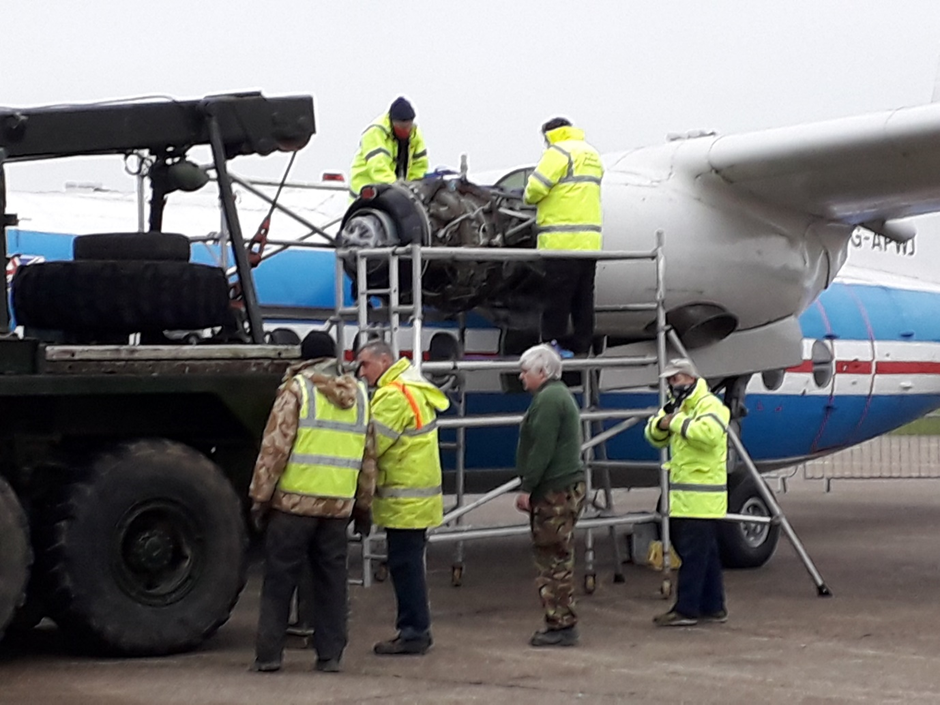
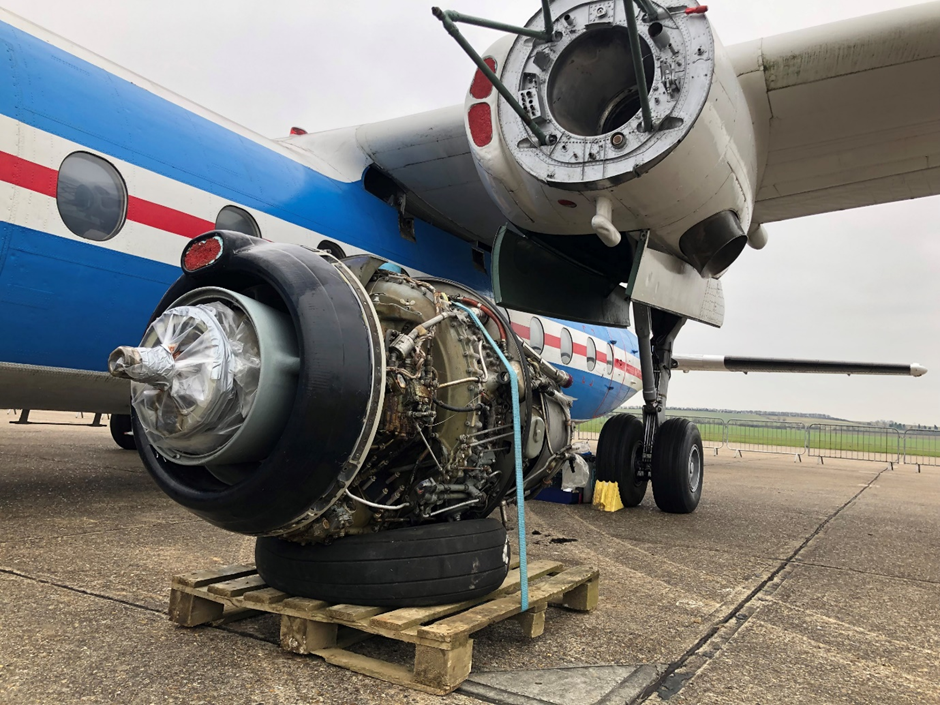
Parts began to come off in quick succession but the removal of the outer wing panels took some time due to the large number of fixing bolts that needed freeing off. Soon the area next to the Herald began to look like a spares shop with fin and tail removed plus doors, cowling panels and fairings. Some were almost lost in the terrible high winds we had in early 2022 but all ended up safely strapped onto pallets for shipment to Morayvia.
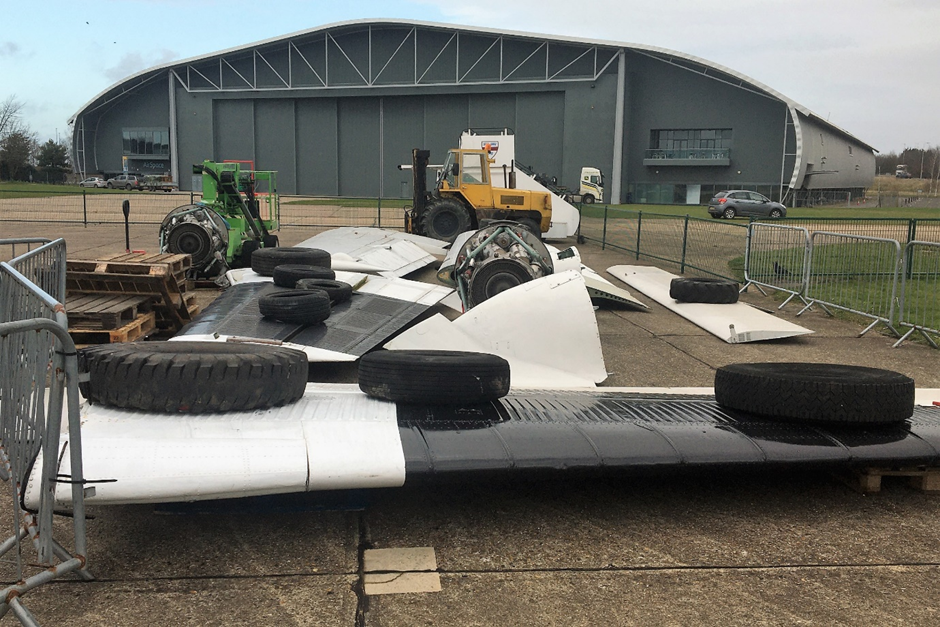
After five weeks of hard work all that was left in one piece was the fuselage and the wing centre section complete with undercarriage. This was just loosely attached to the fuselage as the wing/fuselage bolts had all been freed and loosened. The plan was for a lorry load of the smaller components to make its way north and then a week later a larger lorry would arrive at Duxford with a wooden cradle affixed to the trailer. The entire fuselage and wing assembly would be lifted by a crane, the undercarriage retracted and fixed in the up position. This assembly would then be lowered onto the wooden cradle at which point the wing bolts would be removed and the wing centre section complete with main undercarriage be lifted off and placed on another trailer for the journey north.

The first lorry load headed north as planned on 16 March with the fuselage following a week later and with that our Herald was gone to pastures new. She will be much missed by all of us but the opportunity to add a BAe146 to the collection could be deferred no longer as the 146 is effectively the full stop to the British airliner industry and thus the British Airliner Collection. Being an ex- Queen’s Flight machine also makes her something very different for the general public who we hope to invite on board by the summer when we have prepared her for visitors.






’till the next time Keith
Registered Charity No. 285809